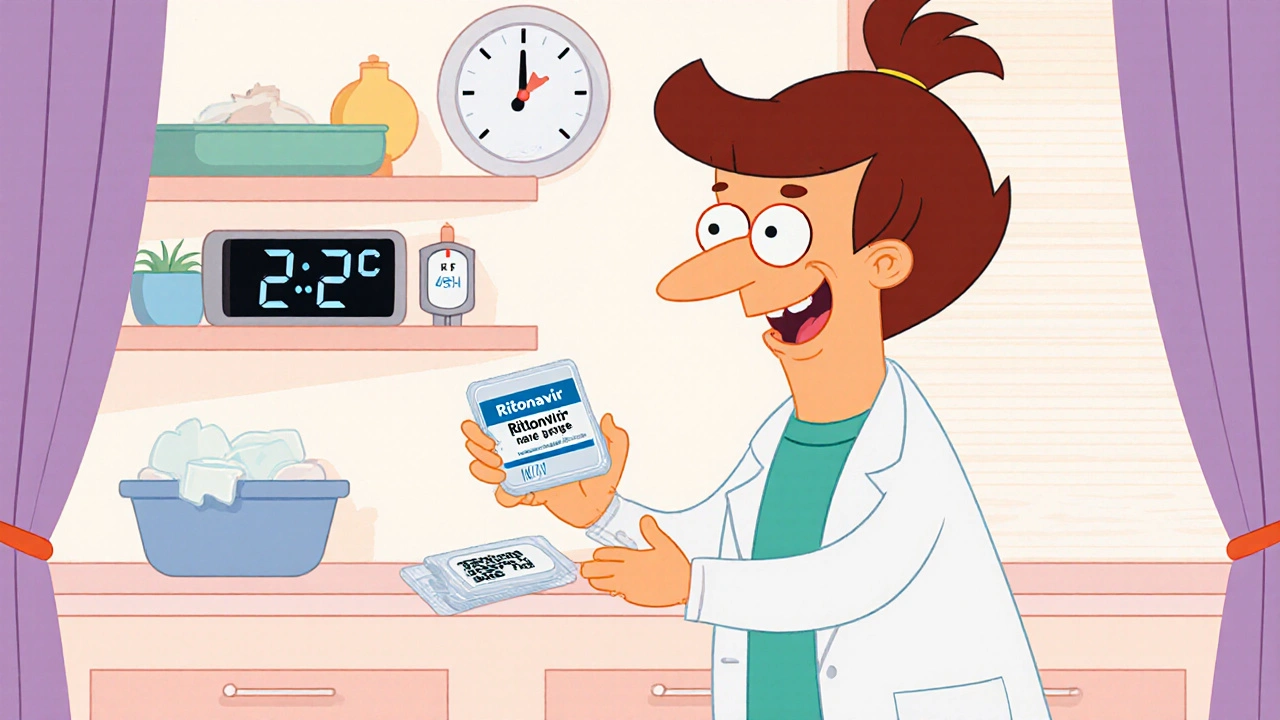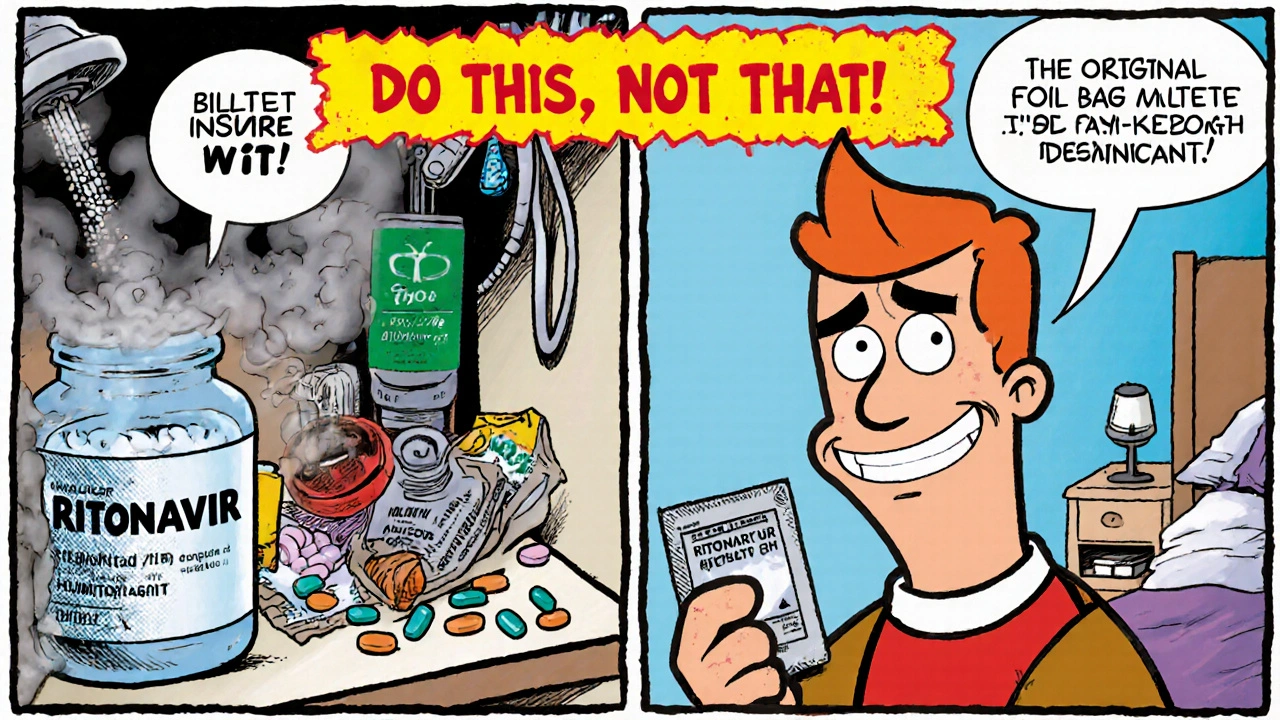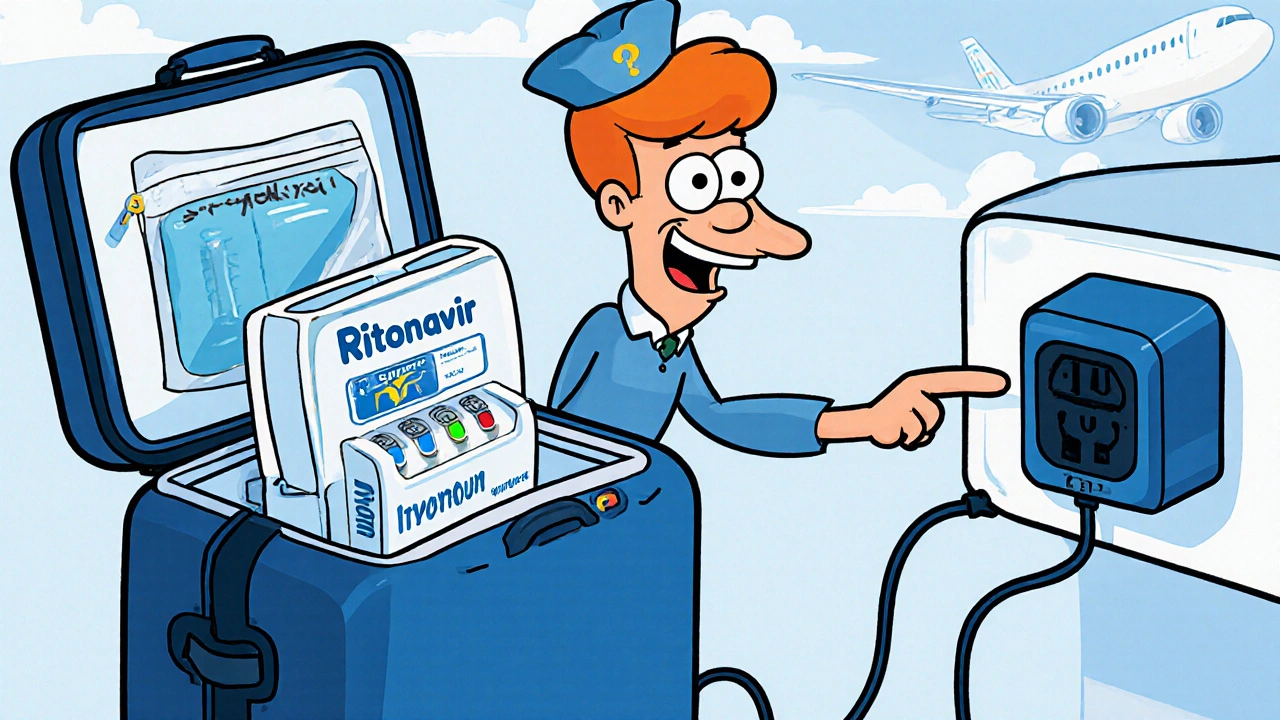
Check if your storage conditions meet the recommended standards for Ritonavir stability. Temperature should be below 30°C (86°F) with humidity ≤50% RH.
Enter your temperature and humidity to check if your storage conditions are safe for Ritonavir.
Keeping your HIV meds working the way they should is a daily responsibility, and Ritonavir is a protease inhibitor used in antiretroviral therapy for HIV. If you store it wrong, you might lose potency and jeopardize treatment outcomes. This guide walks you through the science of drug stability, the practicalities of home storage, and the do‑and‑don’t list that saves you from costly mistakes.
Ritonavir belongs to the Protease inhibitor class. Like other antiretrovirals, it has a specific chemical structure that degrades when exposed to heat, light, or humidity. Degradation reduces the amount of active ingredient, which can lead to sub‑therapeutic dosing and viral resistance.
Studies from the WHO and various pharmaco‑stability labs show that Ritonavir tablets lose up to 10 % of potency after six months at temperatures above 30 °C combined with humidity over 60 % relative humidity (RH). The loss accelerates dramatically when the temperature climbs above 35 °C, a common scenario in hot summer months or in poorly insulated cupboards.
The simplest rule is to keep tablets in a cool, dry place:
If you live in a climate that regularly exceeds these limits, consider a small medication fridge set to 2‑8 °C. This adds a safety margin without the condensation risks of a standard refrigerator door that opens frequently.

Many patients assume a regular kitchen cabinet is fine. In reality, cabinets near ovens, dishwashers, or windows can swing between 20 °C and 40 °C throughout the day. Here are the top three pitfalls and quick fixes:
Being on the move doesn’t have to mean compromising potency. Follow these steps before you head out:

Ritonavir tablets have a typical shelf life of 24 months when stored correctly. However, once you open a blister, the clock starts ticking faster because of exposure to air.
Use these rules:
| Method | Typical Temperature Range | Humidity Control | Pros | Cons |
|---|---|---|---|---|
| Room‑temperature cabinet | 20‑25 °C (68‑77 °F) | Dry (≤50 % RH) | Convenient, no special equipment | Risk if summer heat spikes |
| Refrigerated drawer | 2‑8 °C (36‑46 °F) | Low humidity | Extra safety margin | Not needed for tablets; condensation risk |
| Freezer | -18 °C (0 °F) | Very low | Never recommended - can damage tablet coating | Cracking, potency loss |
No. Bathrooms have high humidity that can degrade the tablet coating and reduce potency. Choose a dry, cool shelf instead.
Only if you receive a liquid formulation. Tablets are stable at room temperature as long as they stay below 30 °C and away from moisture.
Discard it immediately. Discoloration indicates possible degradation, and taking a compromised pill can lower treatment effectiveness.
A bulk bottle without a desiccant and airtight seal can let in moisture and air. It’s better to keep the original blister and transfer only what you need to a sealed organizer.
Inspect the blister at least once a week for any signs of moisture, cracks, or discoloration. Also verify the expiration date quarterly.
Write a comment